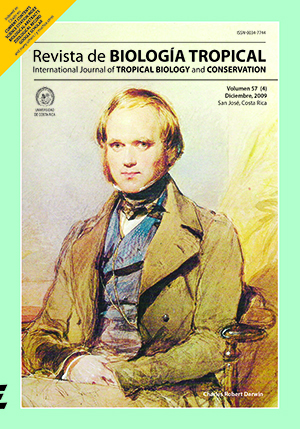Abstract
The study of aquatic environments is sometimes difficult to do with normal sampling methods that use gears. Insectivorous fishes represent good users of these ecosystems and analyzing the aquatic organisms present in fish stomachs, is an alternative way to determine resource abundance and utilization. In this paper, the potentialofTrachelyopterus striatulus as an insect sampler was examined through dietary analy-ses of 383 individuals caught between April 1999 and March 2000 in Lajes Reservoir, a 30 km2 oligotrophic impoundment in Southeast Brazil. We estimated frequency of occurrence and Schoener’s index of similarity. Diet changes among seasons and reservoir zones were addressed with DCA and ANOVA analyses. Its diet was 92.1% insects (ten orders and nine families). Hymenoptera (57.90%), Odonata (39.76%), Trichoptera (27.41%), Ephemeroptera (26.25%) and Coleoptera (28.96%) were the most common groups. Highest insect occurrence and richness were recorded in autumn–summer, a period of greater rainfall and insect activity. Formicidae, the dominant prey item in all seasons, appeared to be especially important in spring, a season marked by shortness of food resources. Trichoptera and Ephemeroptera were the most consumed prey items in the other seasons. Highest insect occurrence and richness were recorded in the middle and upper reservoir zones, respectively. Trichoptera and Ephemeroptera prevailed in the upper zone, where small pristine rivers and tributaries are abundant, whereas Formicidae and Belostomatidae predominated in the lower and middle zones. Because of its abundance in many freshwater ecosystems of Brazil, the ubiquity of insects in its digestive tract and the low level of prey degradation, T. striatulus has potential as an insect sampler of Neotropical reservoirs. However, conventional sampling in Lajes Reservoir is necessary to compare the effectiveness of T. striatulus with other insect sampling methods.
##plugins.facebook.comentarios##

This work is licensed under a Creative Commons Attribution 4.0 International License.
Copyright (c) 2009 Revista de Biología Tropical






